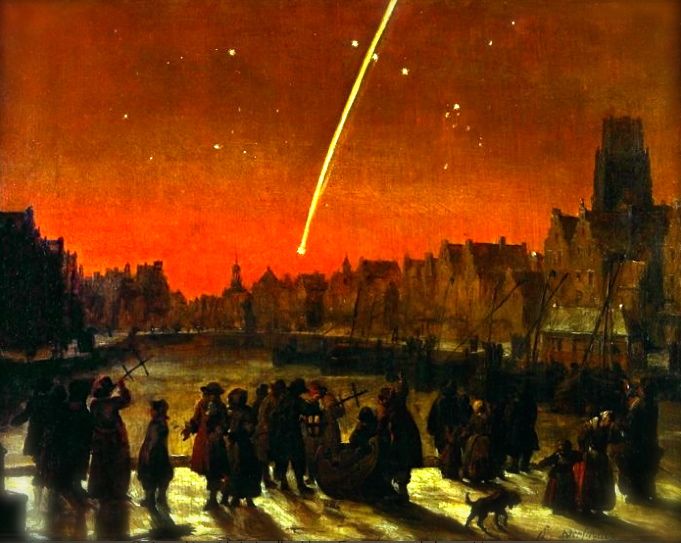Newton’s Great Comet of 1680
Update: A couple of useful links and a popular article on the subject.
I just learned of the discovery of Comet ISON which has apparently electrified the astronomy world for months. What then caught my eye was a paper from David Eichler of Ben Gurion University published just two months later and curiously does not mention the newly discovered body.
https://cosmictusk.com/wp-content/uploads/COMET-ENCOUNTERS-AND-CARBON-14.pdf
Rather, Eichler investigated the effects of a comet the size of Hale-Bopp plunging into the sun. The result according to Eichler would be a huge solar disturbance which could perhaps explain the spike in radiocarbon at 775 AD.
ISON is apparently as large or larger than Hale-Bopp, and headed for a very, very close brush with the sun. I wonder what the probability is of Comet ISON actually plunging into the sun and resulting in an “Eichler Event?”
If it were high I would be forced to drop my regular aversion to forward catastrophism and admit the day was truly nigh.
I am also fascinated with the seemingly genetic relationship between the orbits of ISON and Newton’s Great Comet of 1680. From what I understand of comets, which is little compared to many Tusk readers, the orbital period should be relatively long because the motion of the object is relatively parabolic. I have seen mentioned that the orbital period of ISON should be something around 10,000 years (an interesting timescale to Tusk readers). But other articles seem to suggest that the Comet of 1680 and this comet may be separate pieces of a much larger body from the Oort Cloud, sending chucks our way now and then. Instructive in its own way.
I’m interested in reader insights as always.
A typical science media article regarding Comet ISON from Universe Today:
New Sunskirting Comet Could Provide Dazzling Display in 2013
2013 is looking to be a promising year for potential naked-eye comets, as a new comet has been discovered that will likely skirt close to the Sun, and could provide a stunning display late next year. The comet, named Comet C/2012 S1 (ISON), as it was discovered by a Russian team at the International Scientific Optical Network (ISON), is currently about the distance of Jupiter’s orbit. But it is projected to come within less than 2 million km from the Sun at perihelion by November 28, 2013. Ernesto Guido and Giovanni Sostero from the Remanzacco Observatory in Italy, along with their colleague Nick Howes from the UK have imaged the comet with the RAS telescope in New Mexico, and say, “According to its orbit, this comet might become a naked-eye object in the period November 2013 – January 2014. And it might reach a negative magnitude at the end of November 2013.”
Read more: http://www.universetoday.com/97561/new-sun-skirting-comet-could-provide-dazzling-display-in-2013/#ixzz2GHh0o6pj


